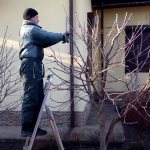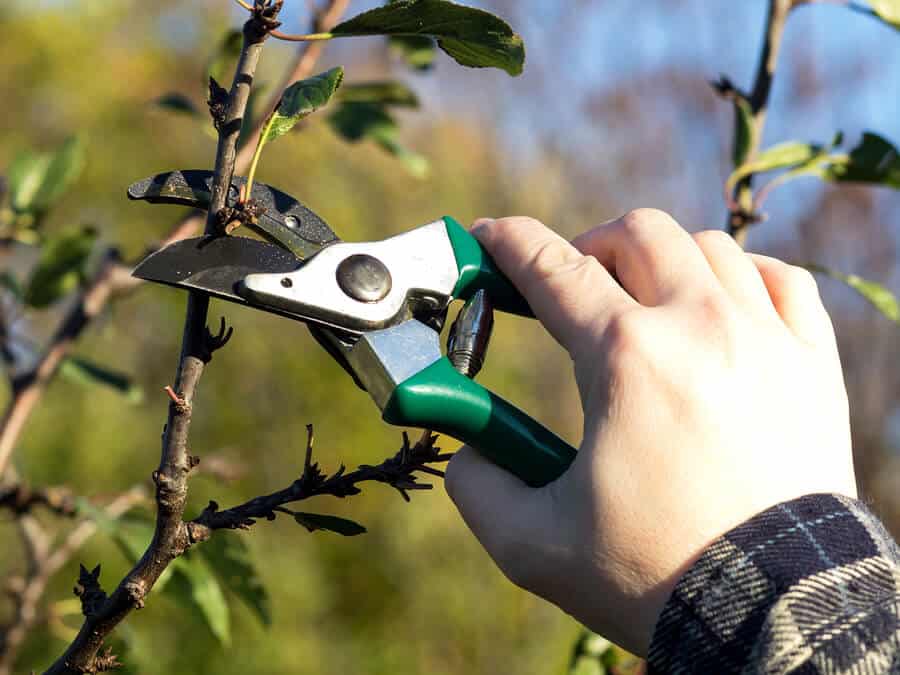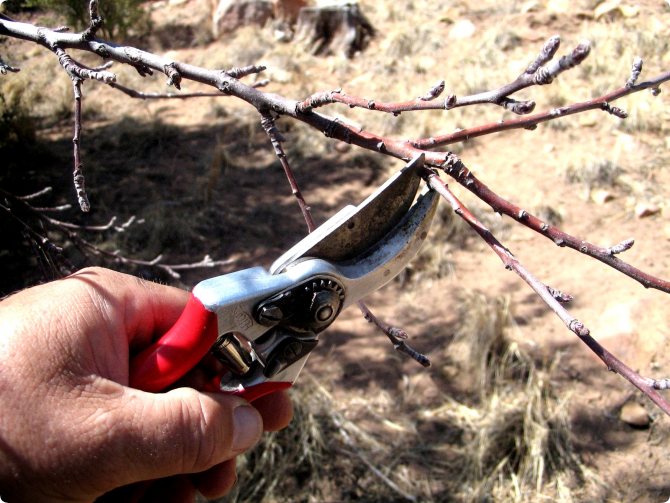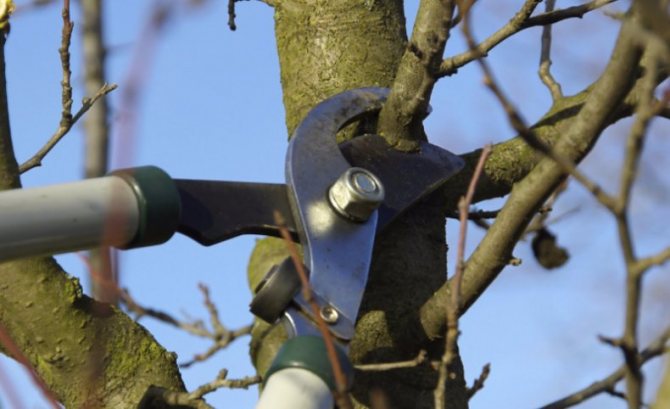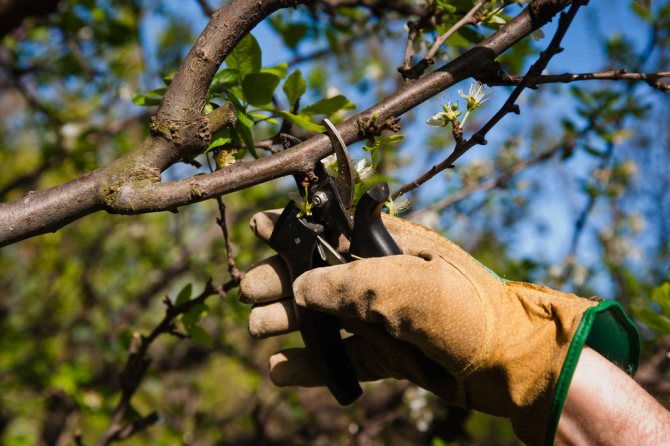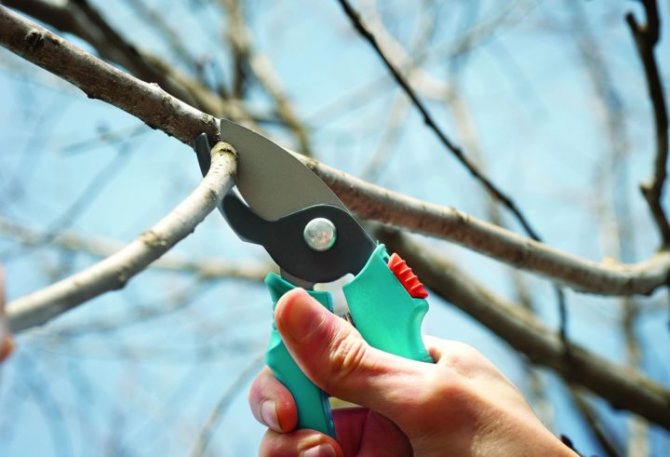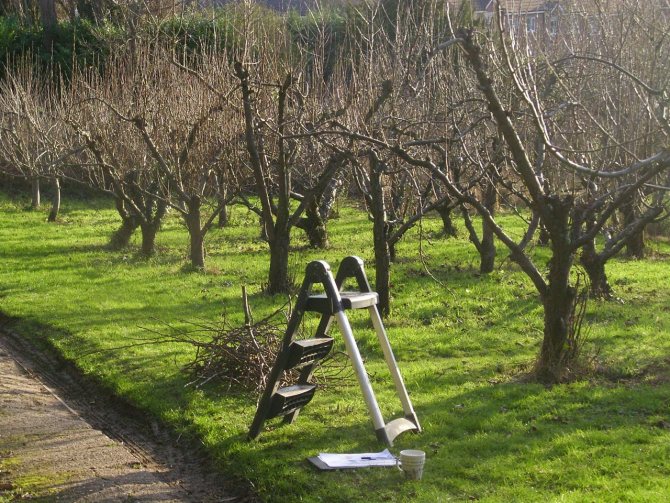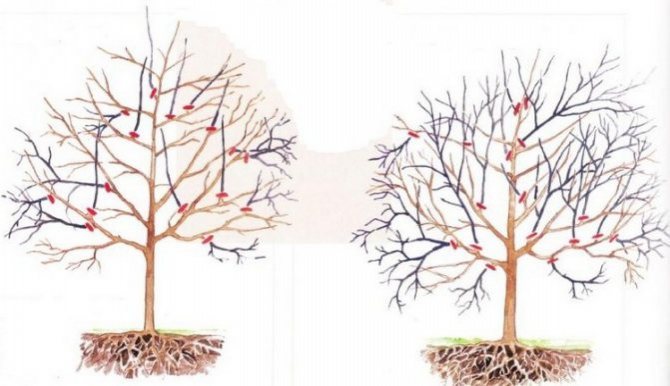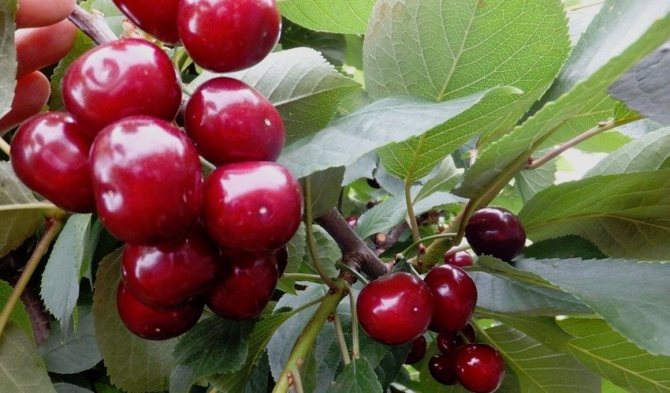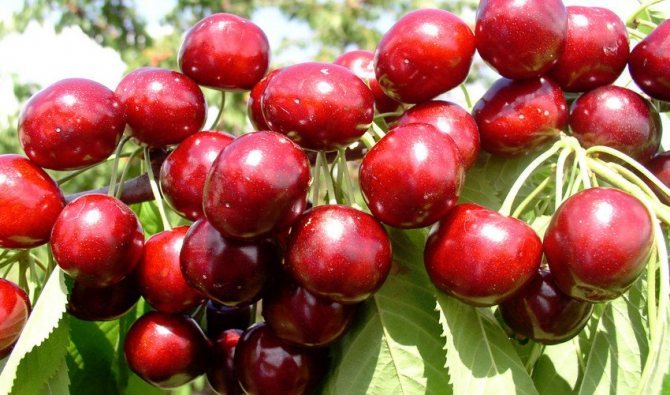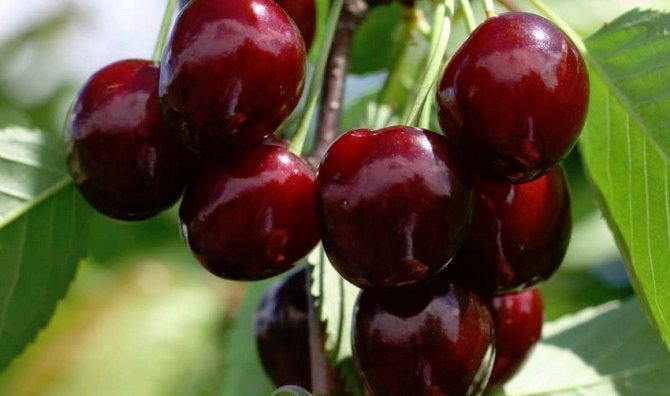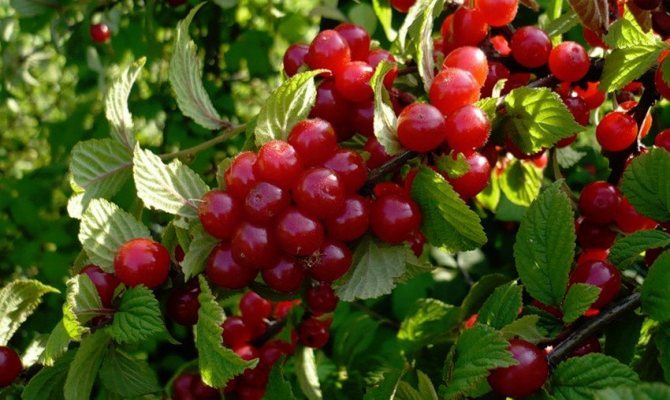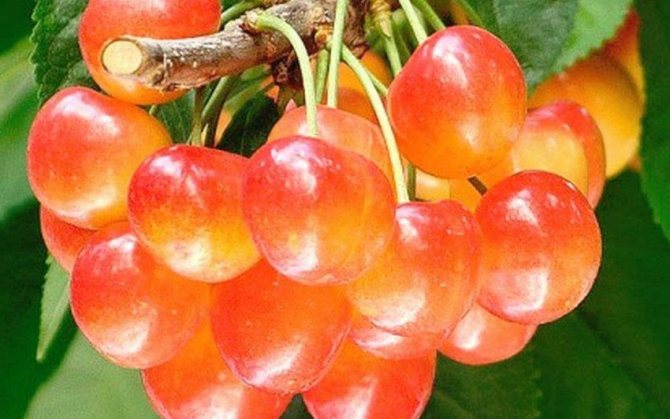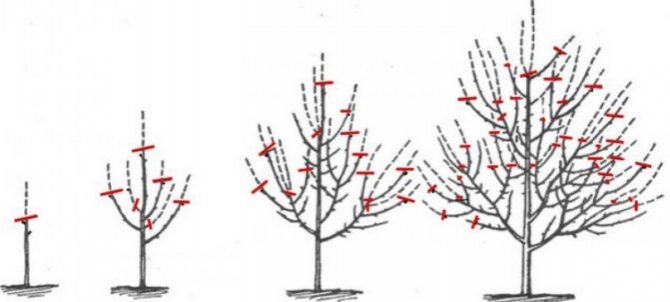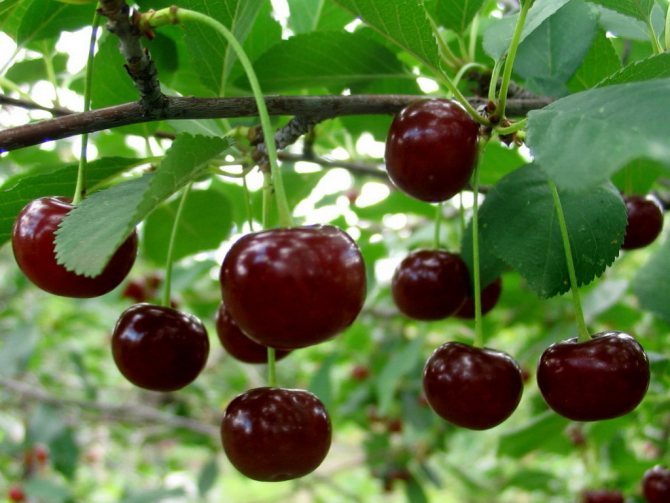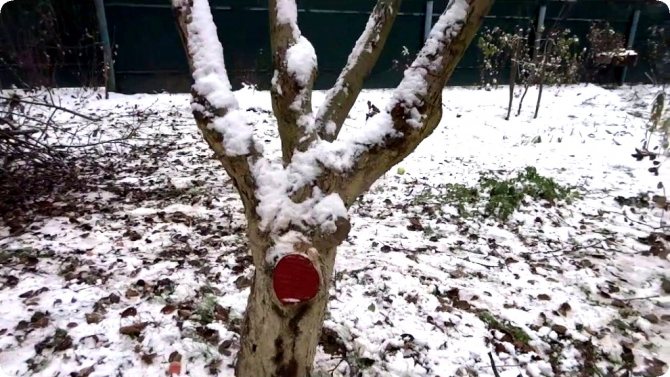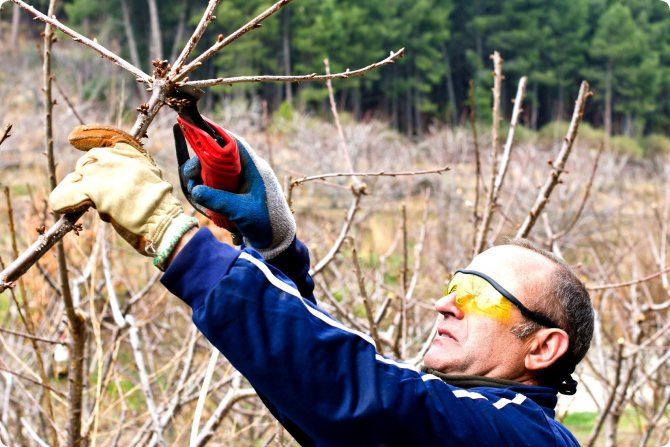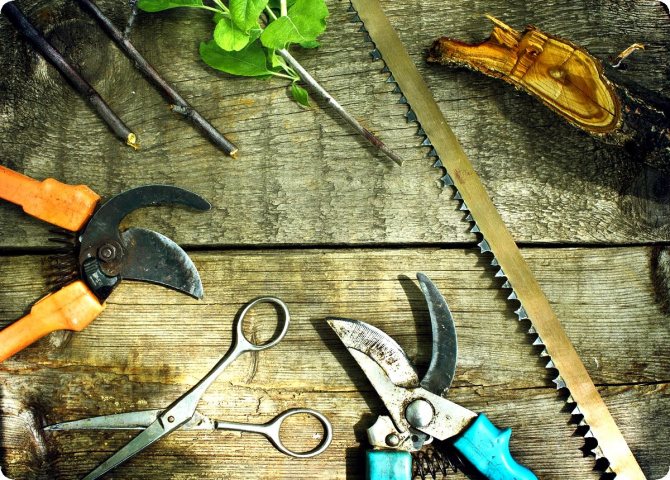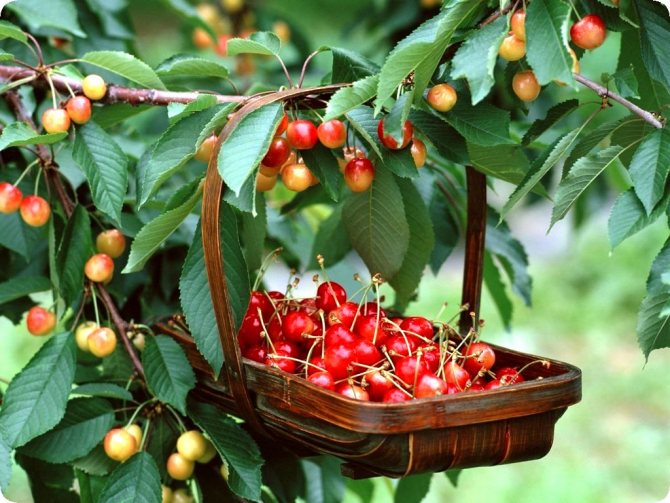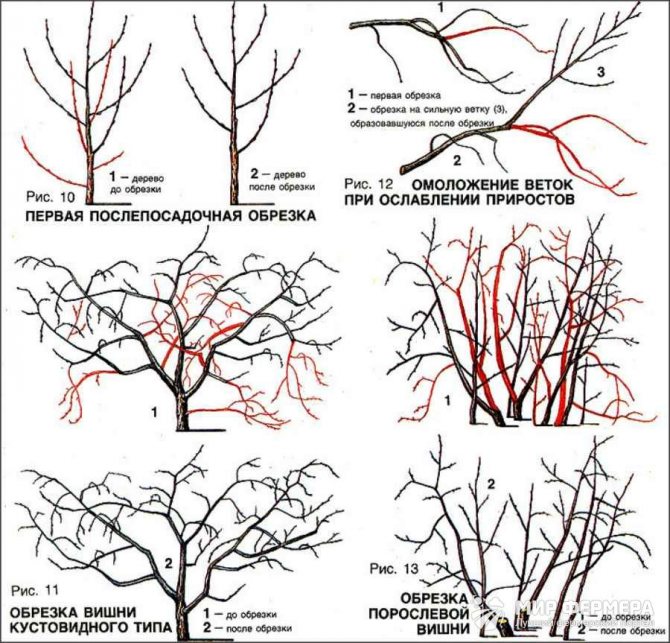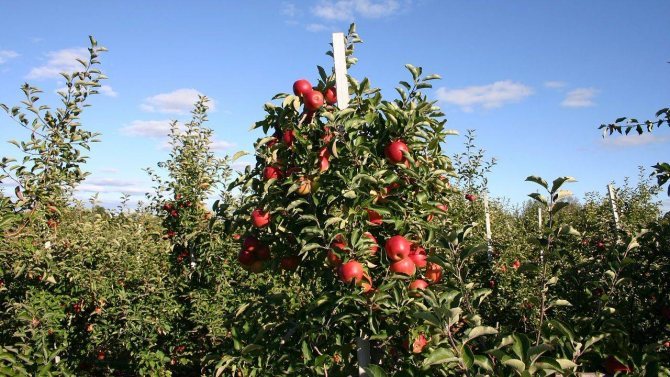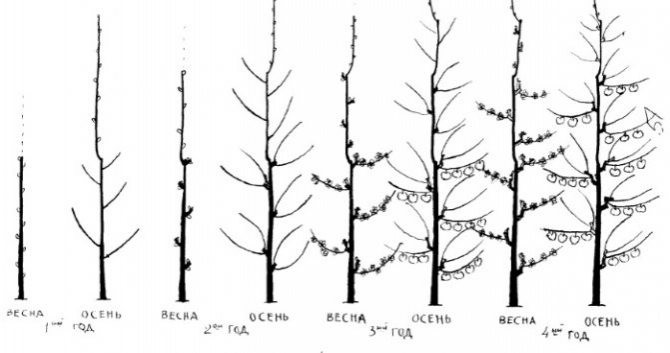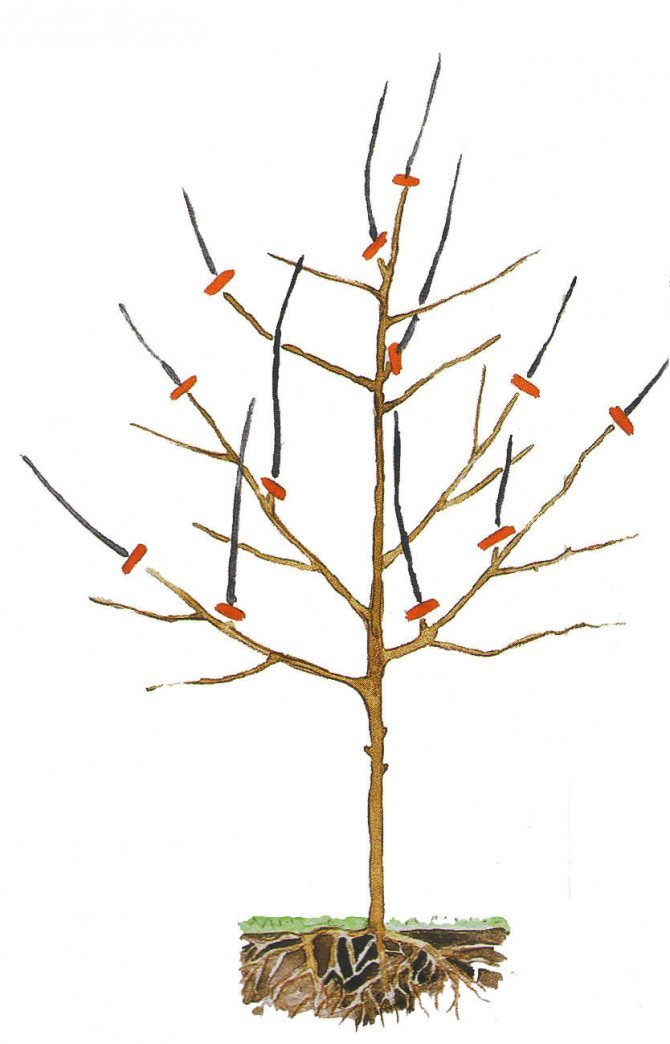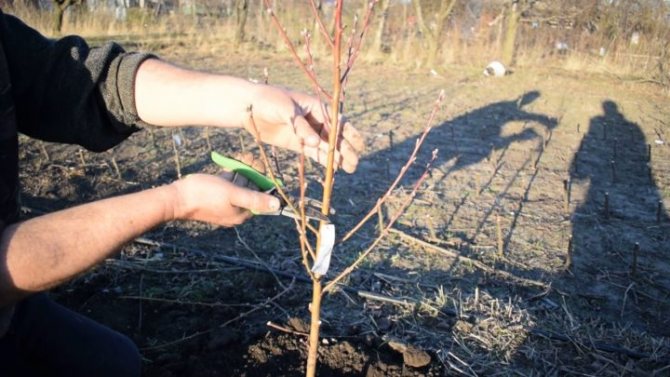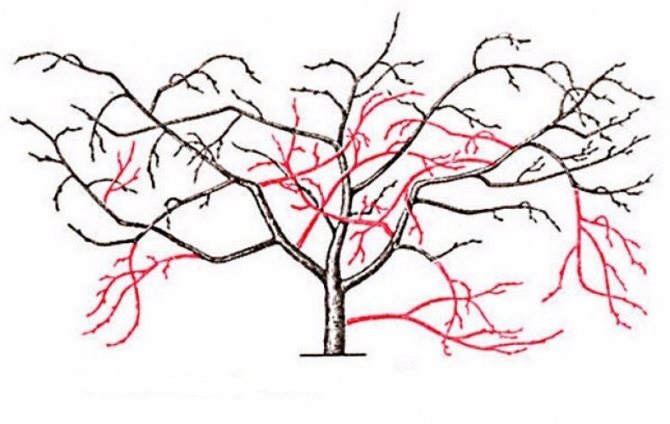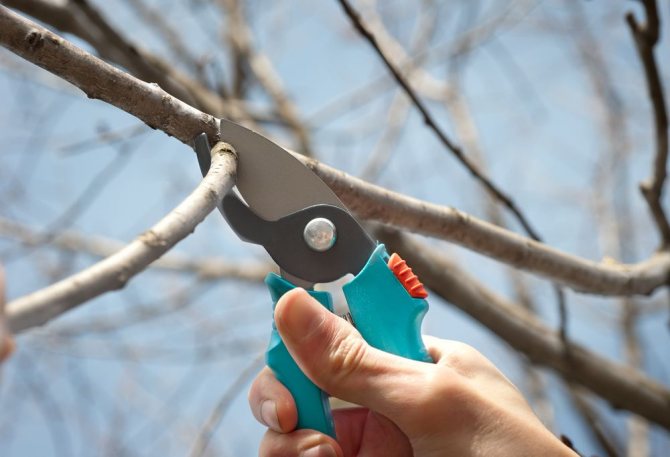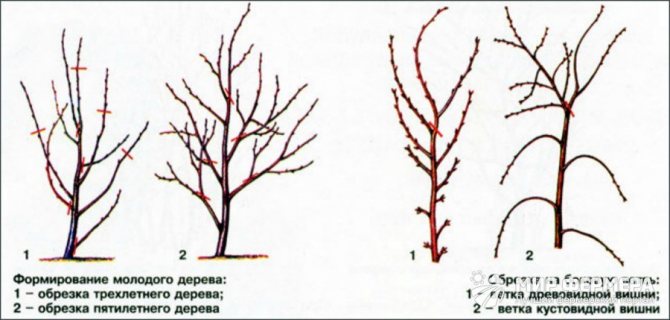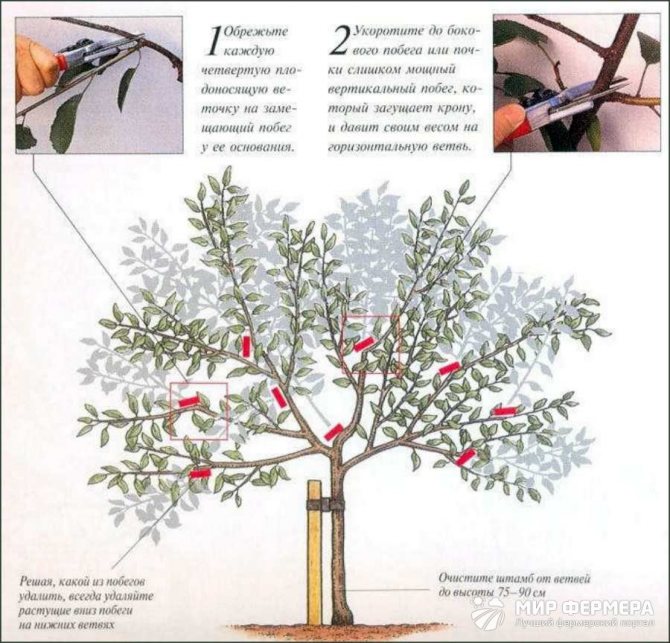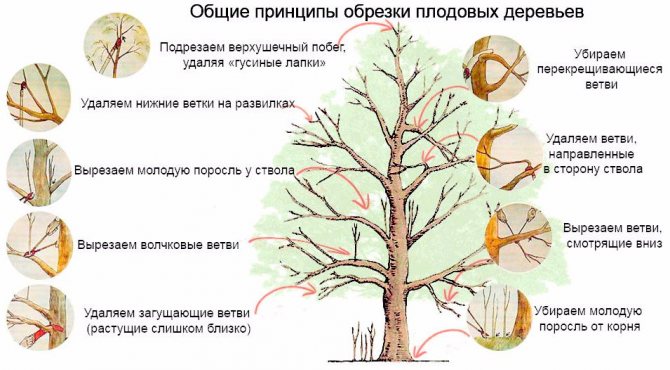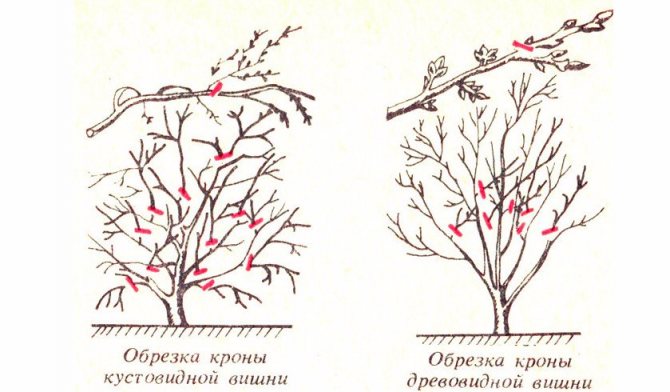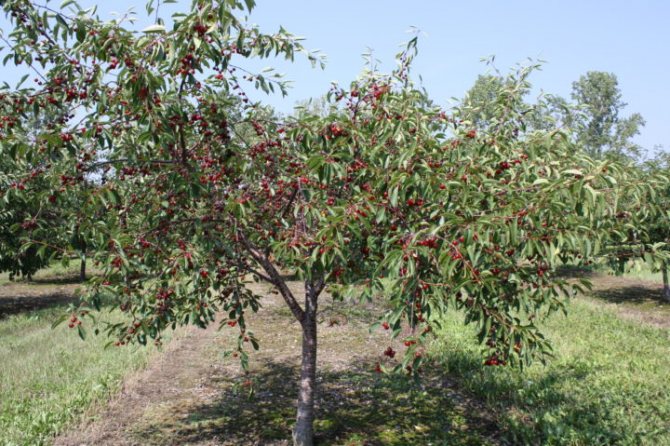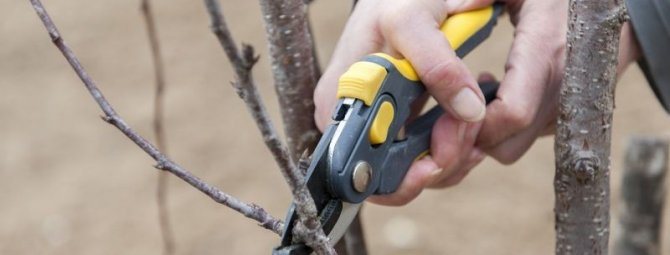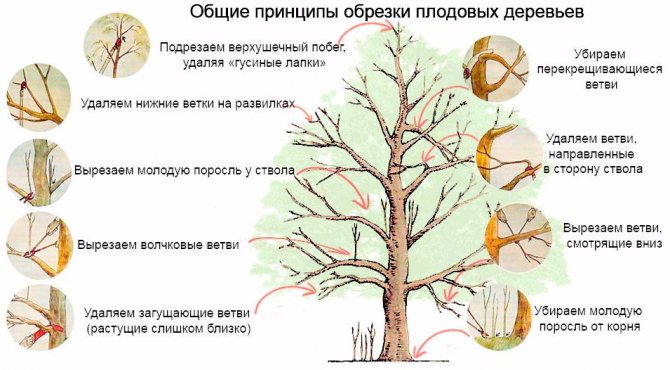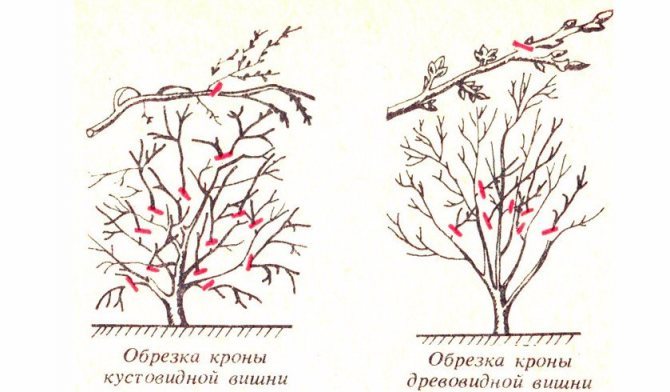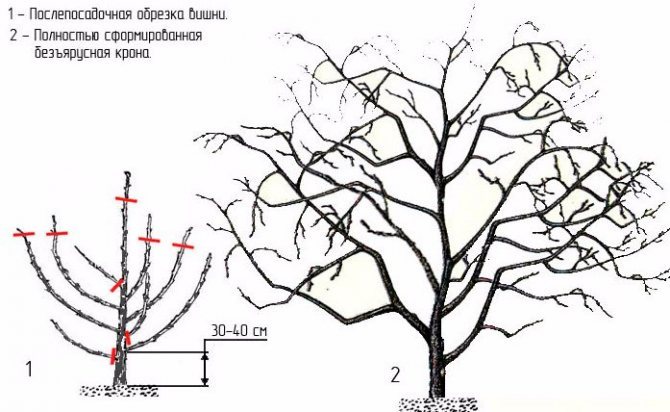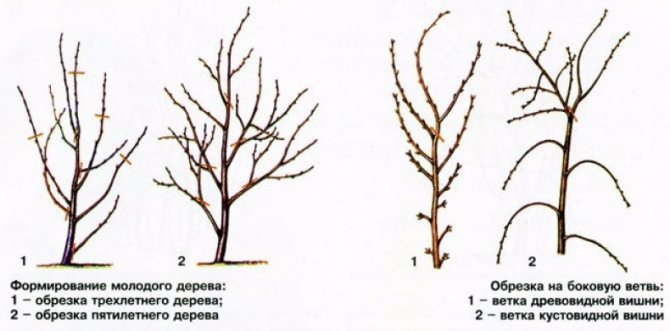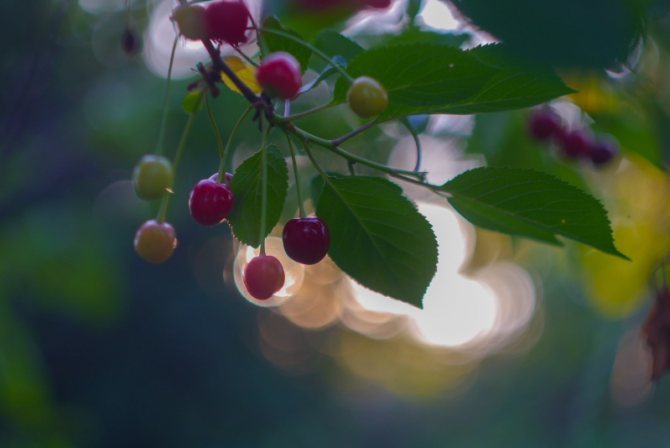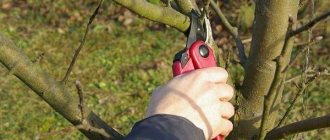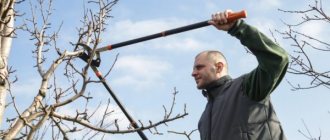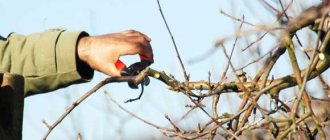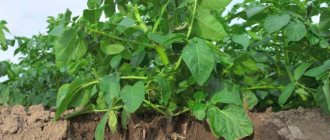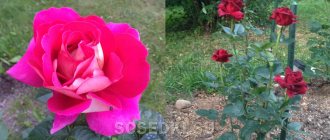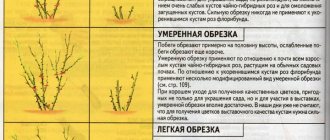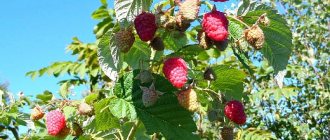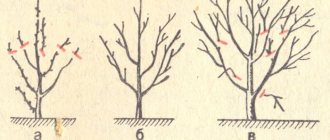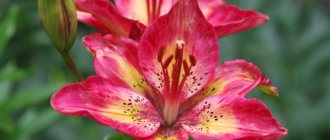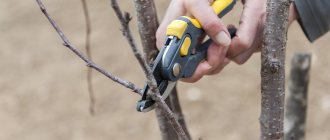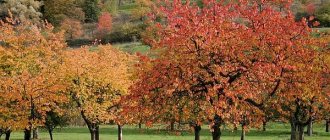The need for autumn pruning
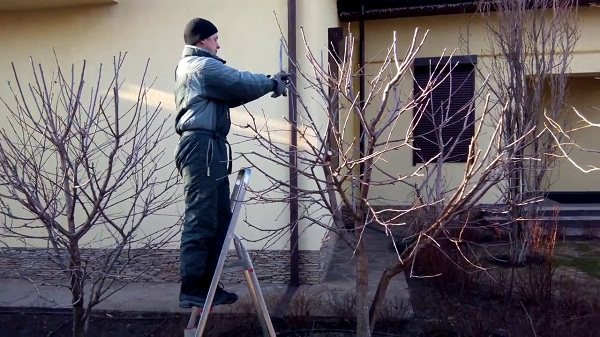
For the recovery of fruit trees and shrubs, it is important to remove old, diseased shoots in autumn in time. This procedure brings enormous benefits to the plant:
- forms the crown of the tree correctly;
- rejuvenates the plant;
- prevents or eliminates excessive thickening of the crown;
- lays the potential for increased yields.
Two methods are used for haircuts. When thinning, the branches are cut off completely to their full length. Shortening means cutting off only part of the shoot. Both methods are practiced when growing fruit crops, including cherries and plums.
Important!
If the technology and timing are not followed, cultivation does not develop the plant, but harms and weakens it.
Why prune cherries in the fall
Autumn pruning is a very important healing process, although many summer residents argue that they do not need cleaning. But in fact, these are exactly the actions that contribute to healing. The benefits of pruning are great.
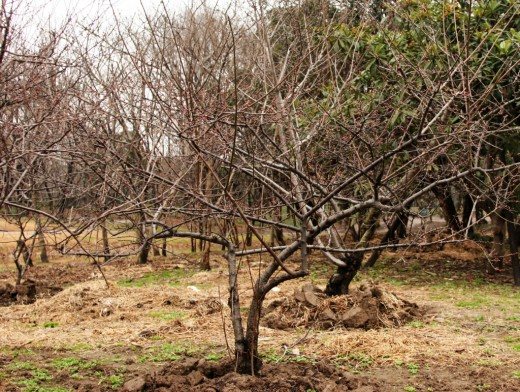

Among the positive consequences, it is worth highlighting:
- Correct crown formation.
- Protection, a way to eliminate painful branches.
- Rejuvenation.
- Increased productivity.
- Prevention of thickening of the bark.
It can be concluded that the cleaning process in the autumn period significantly affects not only health, but also the appearance of the plant.
By clearing the cherries from unnecessary branches, gardeners enable them to grow faster and subsequently give a greater percentage of yield.
Necessary tools for the job
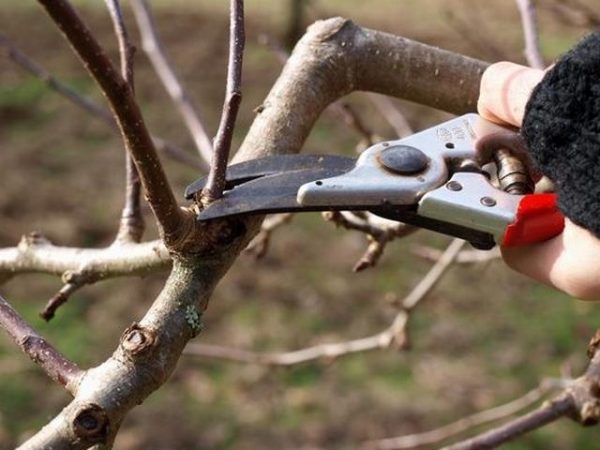

Although pruning cherries in the fall is not a difficult task, it does require attention and effort from the gardener. In order not to damage the cherries, they choose quality tools from trusted manufacturers with a good reputation. To carry out the rehabilitation you will need:
- The pruner is the main tool for the job. They remove shoots from young plants or branches of small thickness.
- A hacksaw or garden saw is used to cut down branches that are more than 50 mm thick.
- The lopper is used when working in a hard-to-reach place on the crown.
Only sharpened tools are suitable for work. With them, the gardener has to make less effort. They are safe, do not damage the plant as much. It is desirable that anti-slip rubber pads are provided on the tool handle. Special gloves are worn to protect hands before work.
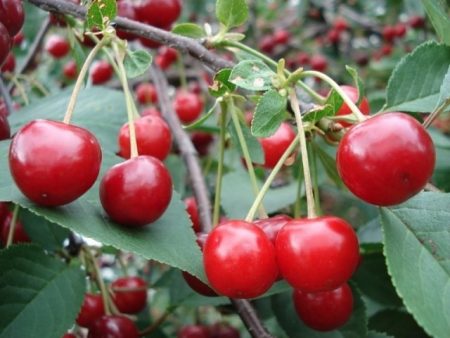

You may be interested in:
Features of cherry care in spring In the spring season, you will have to work hard, especially if there are cherry trees growing on the plot, which needs careful attention ... Read more ...
Processing rules
As basic rules to follow when working with cherry pruning.
- The main task of the second year can be called the formation of the crown in addition to the pruning itself, which prevents the bush from thickening. In this case, all the branches growing inward must be cut out, and the emerging shoots must be broken off, at that moment, while they are green, or this must be done next spring;
- All tree varieties need pruning of branches that protrude strongly upward, so that the tree does not turn out to be excessively tall;
- shoots on bushy cherries are shortened when they reach 50 cm or more;
- as the cherry grows, it is necessary to leave new branches on the trunk as the formation of the correct skeleton of the crown - as a result of the base branches, 12-15 pieces should be obtained;
- dried and damaged branches are cut every year.
In the case of growing tree cherries, gardeners prefer a sparse-tiered system, or a combined one. However, you can form a crown like a bushy or tree-like, based on the system practiced in horticulture.
In this case, the main thing is not to forget that this is a rather responsible matter, since the direction of growth of the tree and its character depend on the correctness of its implementation, which will subsequently affect the direct development and fruiting of cherries.
Important points for autumn pruning
When thinning the crown of a cherry, it is important to consider its appearance. The formation of tree and bush varieties is carried out according to different schemes. In the first case, the length of annual shoots is reduced. This prompts the plant to form side branches on which the berries grow. For bush cherries, annual growths are not cut off, as this leads to the drying out of the entire branch.
After a few years of development, the growth of the tree cherry is limited. Further processing consists in preventing the interlacing of branches, preventing the growth of shoots inside the crown or downward. For heavily thickening bushy varieties, all large branches are removed during cultivation, thinning the plant more carefully.
What you need to know
Unfortunately, rarely anyone succeeds in avoiding all mistakes, the most common of them need careful analysis in order to be as prepared as possible for them in the future. In this regard, the vast majority of gardeners often prefer not to touch the tree, leaving it alone, while it is able to bear fruit, reaping, albeit small, but the fruits of their labor.
However, timely and regular thinning of the crown, as well as the removal of unnecessary branches, will actually bring incredible benefits:
- correct formation of the tree, prevention of its one-sidedness and thickening of the crown;
- increased productivity;
- enlargement of berries, as well as improving their taste;
- providing additional protection for cherries from all kinds of pests;
- the cherry is rejuvenated after each pruning, which allows it not to age.
If you are just at the beginning of your journey - starting growing cherries, then first of all you need to understand the whole structure of flowering and fruiting in order to understand everything, from pruning cherries to the result of benefits for the tree.
Before starting the pruning procedure, it does not hurt to learn to distinguish between vegetative (growing), bouquet (tree-like cherries) branches and increments (annual), in order to give yourself an account of the correctness of your choice for pruning.
It is imperative to take into account the type of cherry - tree or bushy? In the first case, the location of the berries is typical on annual growths or on bouquet branches that bear fruit for several years, while cherries of the second type belong to the category of annuals.
Based on the peculiarities of the formation of the crown, as well as the fruiting of bushy and tree-like cherries, there are some differences.
Pruning plants of different ages
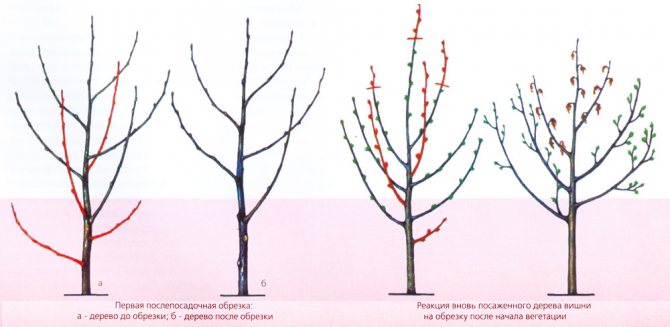

Differences in the treatment of individual cherry trees and bushes do not only depend on the species or variety. There are nuances in the sanitation of cherries, depending on the yield and age of the plant. Let's consider each method in more detail.
Autumn pruning for young trees
For trees of young age, the main task of the gardener during autumn shearing is the correct formation of the crown. Such plants are rarely susceptible to disease and are less damaged by pests, so they do not need to remove diseased or dry branches. Another purpose of cultivation is to prevent excessive crown density.In this case, it is important not to touch the branches of the skeletal base of the tree.
The initial removal of branches for young cherries is carried out immediately after planting. In this case, only 5 or 6 of the strongest are left, and the rest are cut off. To speed up the tightening of wounds, the places of the cuts on the tree are covered with oil paint or garden varnish. In order for the cherry crown to form spreading in the future, branches are left growing in different directions.
Important!
During pruning, you should not leave branches forming an acute angle with the base of the trunk. They do not allow fruiting shoots to grow.
Features of pruning for fruiting plants
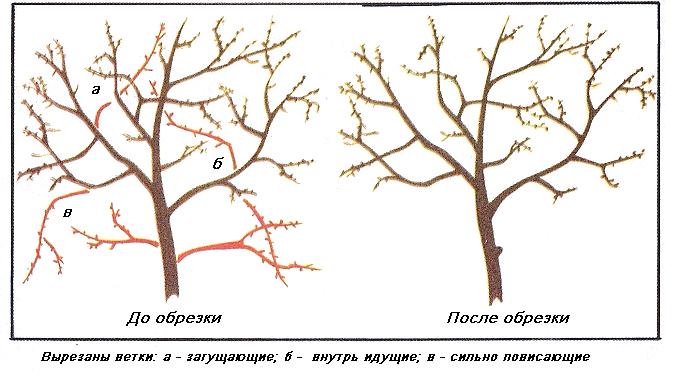

Unlike other fruit crops, cherries begin to harvest quite early. This is both its positive and negative quality. High yields are good for the gardener, but earlier fruiting depletes the tree and it ages faster. Therefore, fruiting shoots are also cultivated from time to time.
With regular trimming, the tree depletes less. The remaining branches, even with a small amount, give a rich harvest. In this case, the berries grow larger and more juicy.
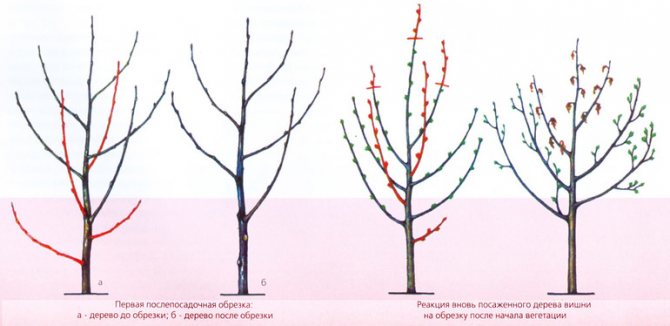

You may be interested in:
Pruning cherries in the fall: a diagram and instructions for a beginner Novice gardeners should understand that the efficiency of growing fruit crops on their site directly ... Read more ...
Renovation of old trees
The main task for beginners when cultivating old cherries is to remove dried and diseased shoots that prevent young branches from developing. This activity is mandatory, it helps to prevent the development of diseases and prolongs the life of the plant.
It is best to prune old wood in the spring, when the weather is already warm enough and the probability of frost is minimal. At this time, pruning is easier for the plant. In addition to damaged shoots, branches that are directed downward or strongly curved are removed during sanitation.
Young cherry tree care
Cherries grow very rapidly and bear fruit every year, for which they are loved by many gardeners. However, these plants also have their drawbacks, the main of which is their short lifespan. By the age of ten, cherry trees begin to wither gradually, yielding less and less fruit.
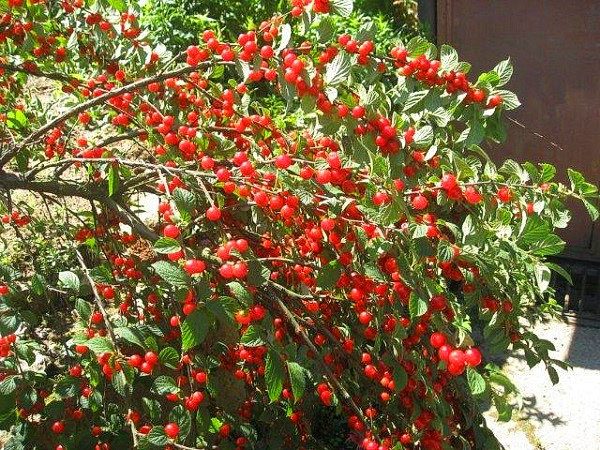

Young cherries require special attention from the gardener.
Given the short age of the cherry tree, it is necessary to start taking care of its well-being immediately after planting. Saplings are very sensitive to temperature extremes and elementary careless handling, therefore they may not even live up to one year. How to take care of a cherry depending on its age is described below.
Table 1. Processing of young cherries by years
| Cherry age | Trimming scheme |
| Up to a year | Immediately after planting a seedling, you should decide on its most developed and "promising" branches that will bear fruit in the future. Other branches should be cut under the ring, as the stumps left behind can begin to rot, causing damage to the young tree. The cut section is processed with a special compound. The branches left behind should be evenly spaced and do not interfere with each other's growth. |
| One year | You can start shortening the cherry by the time she is one year old. You must start by cutting off the top of the tree by twenty centimeters. The procedure is carried out closer to the second half of June, when the buds gradually begin to give new growths. Make sure that the shoots located higher are shorter than those close to the base of the tree. |
| Two years | At the age of two, the cherry is ready to form a full crown. Before shortening, you should select in advance the branches that will be the skeleton for the crown.They are the most developed and strongest of all other branches and grow from the trunk at a forty-degree angle. Shoots that do not belong to such powerful branches are shortened by ten centimeters. In the event that they begin to interfere and take up too much space, it is allowed to completely get rid of them. |
| Three years | In the third year, the cherry forms its more or less well-established "backbone", therefore, from now on, the gardener does not require frequent and radical shortening. It is enough to cut the shoots by ten centimeters in order to keep the fruitfulness of the cherry at the desired level and to thin out the branches, avoiding their overabundance. Among the shoots that have grown this year, leave one or two of the strongest, remove the rest |
| Four years | The main problem inherent in cherries in the fourth year of life is thickening, which occurs due to the active growth of branches. To avoid it, it is necessary to remove all shoots directed deep into the crown and cut off those branches that begin to compete with the skeletal ones. The main thing is to preserve the skeleton, which was planned for the second year. Leave a couple of the most successful of the recently grown shoots. |
| Five years | Upon reaching the fifth anniversary, the cherry is in its prime. With proper care for it, it reflects the two most important criteria: subordination (weaker branches are shorter than skeletal ones) and tiering (the higher the branch is to the apex, the shorter it is). Very little is required from the gardener - to cut off the excess and monitor the correct development of the tree |
As they grow older, it is allowed to leave new skeletal branches in the amount of 15-17 pieces, so that the formed crown looks more harmonious. Withering and dying branches must be removed immediately.
Sanitation of cherries of different shapes
Autumn pruning of cherry and sweet cherry also differs from the type of plant. The removal of branches in the tree and bush varieties is carried out in different ways.
Refurbishment of felt grades
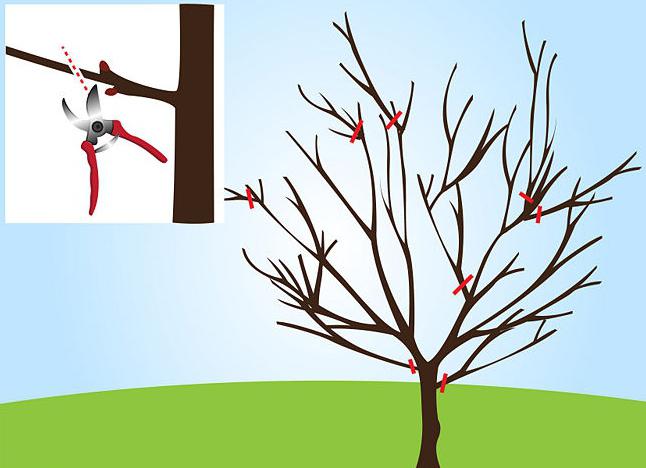

This type of cherry is liked by gardeners for the decorativeness of the bushes, earlier fruiting and the absence of thickening overgrowths. Therefore, it is much easier to cut the felt cherry bush in the fall. At the same time, autumn sanitation is a very important activity for plant care. The lifespan of felt varieties is very short and is no more than 10 years, but with proper pruning, it doubles.
Important!
With proper cutting, 10 to 12 shoots remain on the felt cherry bush.
Since the fruiting of felt varieties is usually carried out on annual shoots, they are not touched when cutting. Only strongly elongated branches with a length of more than 50 cm are shortened by a third of the length.
Sanitation for this cherry variety is performed by removing any broken or diseased appendages. With rejuvenating pruning, the selected lateral shoots are removed on the ring. In this case, do not touch the central part of the crown and skeletal branches. First, they are shortened and young lateral shoots from the dormant buds are awaited. Only then is the old crown cut out.
Pruning bush cherries
The cultivation of the bush variety is performed by cutting off the branches completely without hemp. Otherwise, intensive gum removal begins. This slows down the recovery of the plant after sanitation, and diseases and insects easily penetrate into unhealed wounds.
Branches are removed if the plant grows less than 20 cm in a year. To begin with, they reorganize and cut off the broken and disease-damaged shoots. Then they start cutting out the branches that do not branch. The length of the remaining branches is cut, shortening them to the first strong branching.
Important!
The formation of bush cherry is carried out the more intensively, the less the increase is observed during the year. With a strong overgrown crown, cultivation is carried out in several stages.
Pruning tree cherries
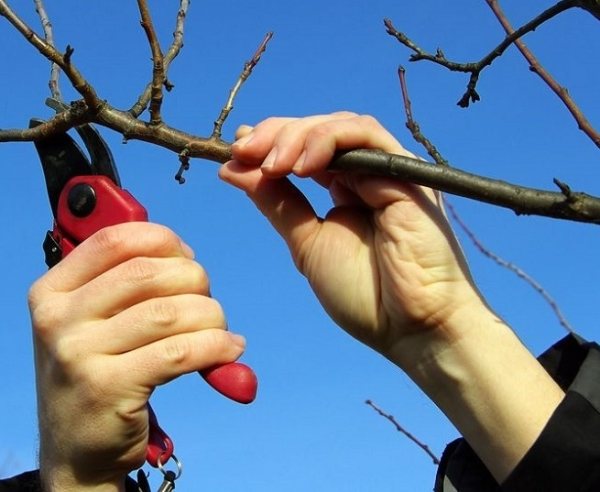

Unlike the artisanal variety, when the berries appear on annual shoots and bouquet branches, the tree cherry crop ripens only on increments of one year. In this case, the cutting of branches is thought out in advance. You cannot remove all shoots in a row. The reduction in the length of the branches of the crown is performed gradually and shoots with a length of less than 2-3 m do not touch.
If the growth of the tree becomes less intense, branches are cut out that do not give young growth. With rapid growth, thinning culture is carried out. All old branches are removed for the purpose of rejuvenation only when the value of the annual growth does not exceed 15 cm. In this case, the shoots growing crosswise are necessarily cut down.
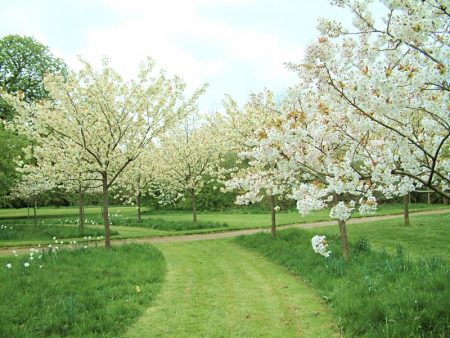

You may be interested in:
What to do if a cherry blossoms but does not bear fruit If the cherry blossoms but does not bear fruit, this is a signal that something is wrong with the tree. Having established the cause of this phenomenon ... Read more ...
Timing for pruning cherries
It is believed that autumn is the best period for sanitary pruning, because it is then that dry, damaged branches are cleaned. By cleaning a tree in the fall, gardeners help it prepare for the winter season.
Cherries are trees that love warmth and do not tolerate winter frosts, so you need to think about the time in advance. The timing depends on the climatic zone of a particular region.
In warm regions, the cleaning procedure can be carried out at the end of November, but in colder regions, cleaning is carried out already in mid-September.
Gardeners not only need to navigate the climate, but also monitor the vegetation of the plant. So pruning is performed at the end of the growing season before the onset of frost.
The main thing to consider is that during the procedure, the plant should already be in a dormant state.
Care after pruning
After completing all the activities for the removal of branches, the garbage remaining in the near-trunk circle is raked up and destroyed. This helps prevent the spread of harmful insects and diseases. In addition, the mandatory care and preparation for winter includes:
- Top dressing using mineral complexes or organics. For this, fertilizers with a high content of phosphorus and potassium are used.
- Watering is combined with fertilization. The cherry is watered abundantly. Before this, the peri-shaft circle is dug into half of the bayonet of the shovel.
- Prevention of diseases and pest infestation is carried out with a solution of urea with a concentration of 5%. Spraying is performed after the onset of the first frost.
- Shelter for the winter for cherries is not required, since this culture has good winter hardiness. In a harsh winter with very severe frosts, the trunk circle is covered with straw, and then periodically covered with snow. This will protect the plant's root system from freezing.
Should you prune your felt cherry branches?
One of the differences between felt cherries and other varieties is the absence of thickening growth, which simplifies the pruning procedure, but does not cancel it.
The crown of the felt cherry is thinned out annually, leaving no more than 10-12 bush shoots. Annual branches are not touched, as berries are formed on them. The exception is half-meter branches, they are cut by 1/3.
How a gardener makes pruning felt cherries is shown in the following video:
Compliance with the pruning conditions helps to increase the lifespan of the felt cherry.
A Few Tips
In the absence of experience, many gardeners make mistakes when performing an autumn cherry cut. But you need to hold this event in order to constantly get a big harvest. In addition, pruning trees in the fall contributes to the successful wintering of the plant.
When asked how to prune cherries in the fall for a good harvest, experienced gardeners recommend following these tips for beginners:
- Trim cherries correctly before frost.
- Unlike other fruit plants, the buds on a cherry tree are located at the ends of the branches, and not along the entire length. Therefore, during cutting, they are completely removed or simply thinned out, leaving 2-3 pieces on each shoot. This method maintains high yields.
- Complete rejuvenation of cherries is convenient to do with a saw.
- The tree is trimmed, trying to give all annual branches a length of 30 cm.With this method, there will be no exposed branches.
- Root shoots are removed annually, as they significantly reduce yields.
- For a tree cherry, the optimum height is 3 m. Therefore, as soon as the tree reaches this point, the top is pruned.
- The crown of this culture quickly overgrows. Therefore, trimming work is carried out annually. Otherwise, the growth of fruiting shoots stops.
- All branches on the cherry are not removed in a row. Be sure to leave annual shoots and bouquet branches.
Until now, the opinions of experts about when it is better to prune cherries in spring or autumn differ. But long-term observations have shown that the autumn shearing of the plant is much more beneficial. It also helps to better survive the winter cold. The purpose of autumn cultivation is not a complete change in the appearance of a tree or bush, but a correction of the shape of the crown and sanitary cleaning. It is necessary to improve yields and prevent various diseases.
When to trim
Depending on the region of the country in which the cherry is grown, the optimal timing of its autumn pruning may be different. In general, it is held in the country from September to mid-November (the latter option is possible only in southern Russia).
In the suburbs, Central lane
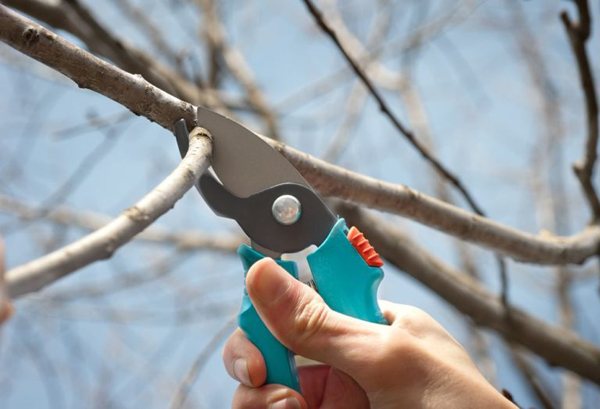

In the conditions of the Central strip and the Moscow region, cherries are cut from September to mid-October. The culture is formed before the leaves fall, pruning after the leaves fall is possible only in the warm regions of the country. The indicated periods are slightly extended, therefore, to carry out timely pruning, it is necessary to follow the weather reports.
In the Urals, in Siberia
In the Urals and Siberia, pruning of cherries must be completed by the end of September. For the remaining time before the onset of frost, the wounds will have time to heal, and the plant will prepare for wintering.
In the Leningrad region
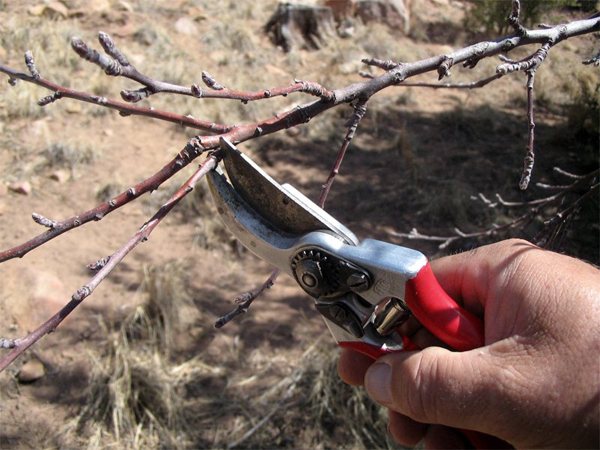

In the Leningrad Region, cherries are pruned at the time recommended for the Middle Belt - from September to mid-October. In this case, it is also important not to miss the moment and carry out a formation event during the end of the growing season of the crop before the onset of frost.
Rules for growing and planting columnar cherries
This is not to say that columnar cherries are too demanding for growing conditions and care, but at the same time there are several basic rules for growing them. First of all, pay attention to the selection of a suitable planting site.
Check out the features of planting cherries in the fall.
It should be the sunniest and warmest place in the entire territory, protected from drafts and flooding by groundwater.
Be sure to take into account the area of the territory, especially if you plan to plant several trees at once: the minimum distance between neighbors should be at least 0.5–0.8 m so that the root system of each tree can develop freely.
In addition, the composition of the soil on it is of great importance when choosing a suitable site. The ideal option for columnar cherries will be loose and fertile soils, enriched with sufficient nutrients.
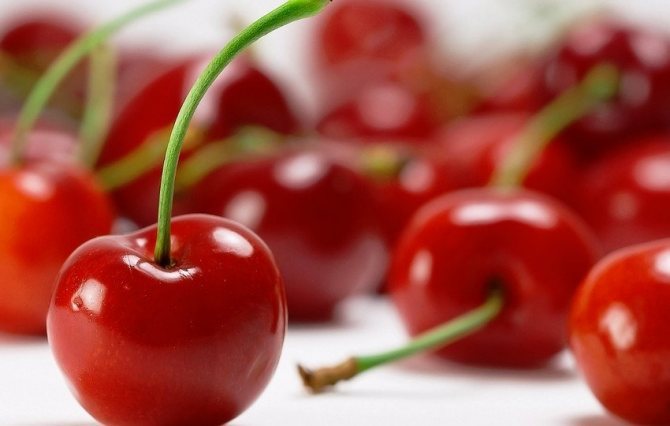

On depleted substrates, when preparing the planting pit (from autumn or 2 weeks before the intended planting of the seedling), humus and superphosphate fertilizer must be used, mixing them with the top layer of the earth. The optimal dimensions for such a pit are 40–45 cm deep and 50–60 cm in diameter.
When choosing planting material for the described culture, always pay attention to the integrity of the upper bud and the condition of the root system: all roots should be elastic, flexible, without signs of damage by pests or fungal ailments.
If everything is fine with the seedling and the planting hole has settled for it, you can proceed to the planting procedure itself, which is desirable to be performed in the spring.
It consists of several sequential actions:
- Formation of a small mound of fertile soil at the bottom of the planting pit.
- Placing a prepared seedling on it (all roots should be even and evenly distributed over the surface).
- Organization of the support in the form of a peg driven in next to it.
- Sealing the hole with soil, followed by compaction of the substrate and moistening the earth.
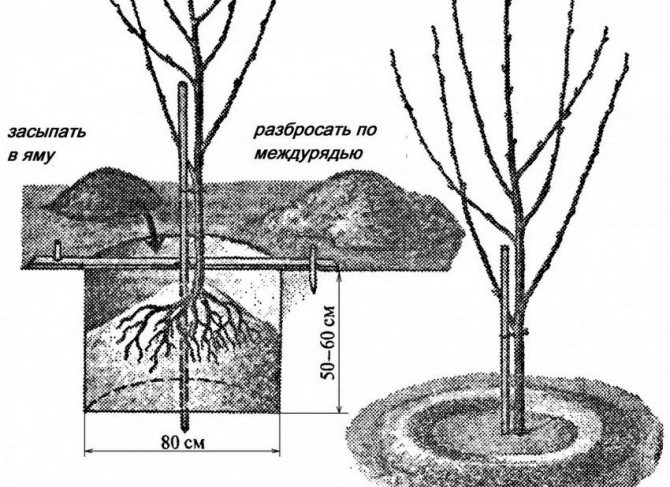

Upon completion of planting, the trunk circle can be mulched with humus or a layer of sawdust, which will help retain moisture for a long time. Did you know? Cherries came to the territory of Russia around the 12th century, and the first cherry orchards in Moscow were planted by Prince Yuri Dolgoruky. In the future, the spread of this culture was carried out by monks who grow plants on the territories of their monasteries in different parts of the state.
How to care for pruned cherries?
Garden pitch for processing cuts can be bought ready-made or made by hand
A special putty for horticultural crops is used when processing open sections of cuts. Beginners most often give preference to garden brew or "Petrolatum", but agronomists advise to make a composition for the regeneration of plant tissues after pruning on their own:
- Nigrol remedy. In 0.5 kg of hot nigrol, 0.5 kg of rosin and the same amount of paraffin are carefully poured, after which the mass is thoroughly mixed. Before use, the finished putty composition must be warmed up to a warm state.
- A product with wood alcohol. You need to mix fine rosin and melted lard in a ratio of 16: 1. The resulting liquid is thoroughly warmed up and brought to a homogeneous state, after which 8 parts of alcohol are added to it.
- Composition based on beeswax. Melted beeswax, rosin or resin and linseed oil are thoroughly mixed in a ratio of 4: 20: 1. The resulting mixture is brought to a boil, after which 2 parts of crushed charcoal are added.
- Means with bacon. 1 part of lard is melted, after which 2 parts of wax are added. The finished mixture is brought to a homogeneous consistency, 4 parts of chopped rosin are added to it. The product is boiled for half an hour and kneaded with cold water.
Some experienced gardeners supplement a small amount of heteroauxin in a regular garden variety for the most effective healing of the slices. It is recommended to use 1 growth stimulant tablet per liter of the product.
Basic information about cherries
- Appearance: deciduous tree or shrub from 1.5 to 5 meters tall, sheds foliage in the autumn-winter period.
- Fruit: sweet and sour juicy drupe of red, dark red or black color, containing one stone.
- Origin: a subgenus of plants of the Plum genus, the Pink family.
- Life span: twenty five to thirty years.
- Frost resistance: high.
- Watering: moderate, drought-resistant plant.
- Soil: neutral, well fertilized.
- Attitude to light: light-loving plant.
Cherry blossoms in spring are a beautiful sight. No wonder this tree is found in the literary works of various writers. Shevchenko's Ukrainian hut in the village is necessarily decorated with a cherry orchard. Everyone knows the work of AP Chekhov "The Cherry Orchard". Small white or pink cherry flowers are collected in umbrella inflorescences, bloom in early or late May, early June, depending on the variety and climate. Fragrant flowers are good honey plants. Bees collect pollen and nectar from them.
Nature has given this wonderful fruit a lot of nutrients and vitamins.
Cherries contain:
- organic acids - folic, pantothenic;
- macro and microelements - potassium, calcium, phosphorus, magnesium, iodine, iron and others;
- many vitamins - A, B, C, E, PP, N.
There is just an incredible amount of elements contained in such a small sour berry.

